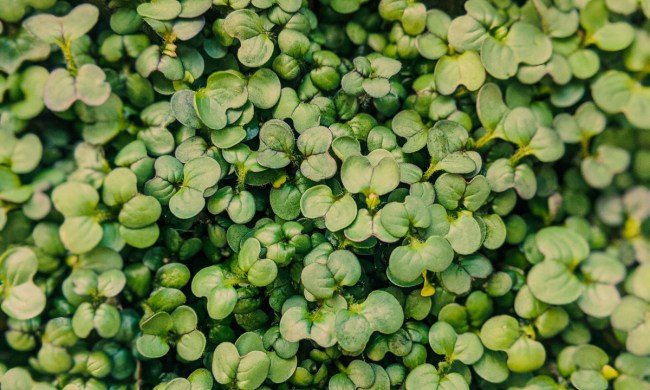Wine is wine is wine… right? Not always. Some of us choose our wines based on the sticker price or color, but others, like sommeliers, have entire careers around knowing and loving wine. While you may be familiar with the whites, reds, and roses, wine can fall into other, less talked about categories: organic and non-organic. What’s the difference, and why should you care? Here’s everything you need to know about opting for the organic vino the next time you stock up.
What is organic wine, technically?

There are a few more considerations when it comes to earning that “organic” label on wine, though. In the United States, a winemaker is not allowed to add sulfites, GMOs, or specific additives to the wine and call it organic, whereas, in Europe, a certain amount of added sulfites is permitted. Additionally, for organic wine to truly be “organic,” it must be processed in an organic-certified facility.
However, there is an easy workaround to keep “organic” on the label. These extra additives can be used in the winemaking process and the wine can be made in a non-organic facility as long as the phrase is “made from organically grown grapes,” and not “organic wine.” This can lead some customers to believe they are purchasing an organic wine, even when that isn’t the case. Organic grapes do not always make organic wine.
Why pick organic wines over non-organic wines?
There are a few reasons why you might want to pick organic wines over a non-organic wine.
First, there are no artificial or genetically modified ingredients. The ingredients in wine can be manipulated in the same way all other produce can be modified. Many non-organic wines are filled with GMOs and synthetic additives such as dyes. You won’t get that with organic wine. If your diet involves staunch avoidance of artificial coloring, flavoring, and other modifications, organic wines are the way to go.
The no-added-sulfites really makes a difference. As noted above, U.S. organic wines are not permitted to include any added sulfites. Why is this so important when wine already naturally contains these minerals?
Sulfites are sulfur compounds that exist naturally in grape skin. While small amounts of these minerals are fine, non-organic winemakers have discovered that adding more sulfites to the mix creates a wine with a longer shelf life. Unfortunately, the addition of these sulfites can cause headaches and possible allergic reactions for those with sulfite sensitivity. It is not to blame for a hangover the next day, however, because a sulfur headache comes on within fifteen minutes.
Organic wines contain less sugar. Non-organic wines often contain added sugar, resulting in a sweeter wine and a longer shelf life. If you prefer a sweeter wine, opt for an organic wine that’s naturally sweetened. All that added sugar results in worse hangovers, headaches, and possibly even a cavity or two.
How to tell if a wine is organic
To tell if a wine is organic, take a look at the label. You should be able to find some key information to help you make your purchase.
Typically, the label will mention that the wine is made with organic grapes, and there will also be a USDA certification seal, which is the crucial deciding factor. A winemaker can claim their wine is natural, green, or a range of other buzzwords, but if there’s no USDA certification saying that the wine is organic, it has not been verified.
These policies hold fast for any wine sold in the United States, even if it’s imported from abroad. If it’s being sold as organic wine in the U.S., it still must meet USDA standards of organic certification in order to reach store shelves.
Are organic wines a fad or something more?

BlissMark provides information regarding health, wellness, and beauty. The information within this article is not intended to be medical advice. Before starting any diet or exercise routine, consult your physician. If you don’t have a primary care physician, the United States Health & Human Services department has a free online tool that can help you locate a clinic in your area. We are not medical professionals, have not verified or vetted any programs, and in no way intend our content to be anything more than informative and inspiring.


